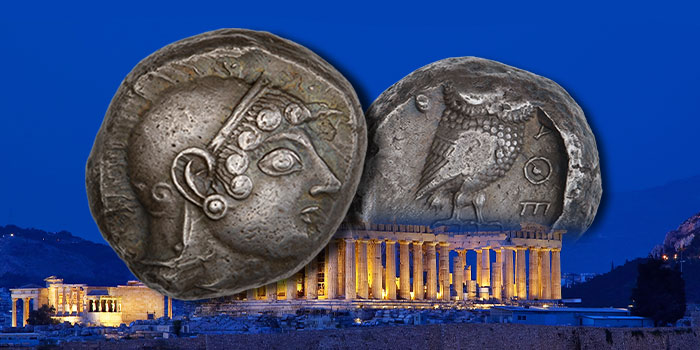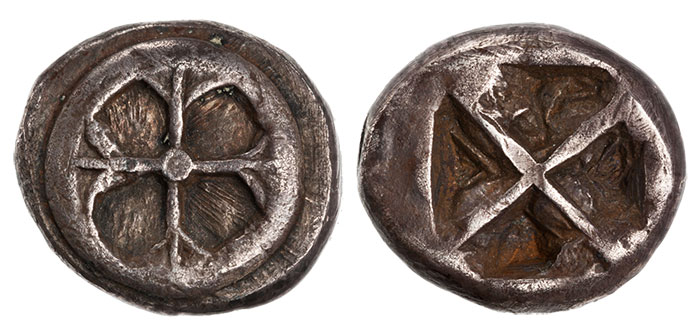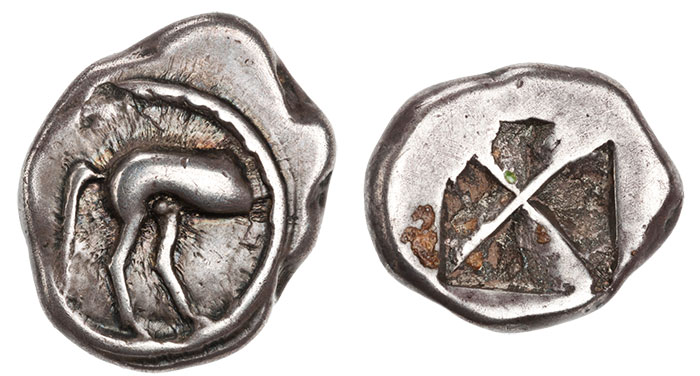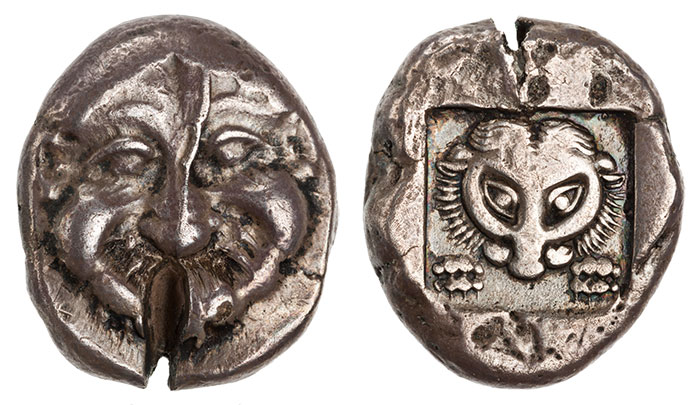
By Peter van Alfen for American Numismatic Society (ANS) ……
On the bills and coins that we use today, we recognize the link between the words and images that appear on the objects and the powers that issued them. Images of dead presidents and inscriptions like “United States of America” point to the authority of the federal government. We also recognize that ancillary images, such as the Lincoln Memorial, serve to define our shared heritage as the nation of We the People.
Every design element and inscription on modern US coinage is the result of a multilateral process, involving artists, members of Congress, the Commission of Fine Arts (CFA), the Citizens Coinage Advisory Committee (CCAC), and the Secretary of the Treasury to find the ideal means of expressing the entwined concepts of authority and nationhood. Using coin imagery, or types in numismatic parlance, to convey these concepts seems as old as coinage itself. We don’t have to search far among ancient Roman or Greek coins to find coin types expressly linked to the powers that issued them. It would seem a fair assumption then that coin types served these purposes from the very beginning, explicitly linking coins to political powers.
This assumption is seriously challenged, however, by a number of archaic coinages, including those struck in Athens.

The production of Athenian coinage probably started around the time that Peisistratus consolidated his tyranny in 546 BCE. On the earliest series of coins are 14 different types including an amphora, triskeles, astragal, scarab, horse, horse protome (and the corresponding horse’s rear end), owl, bull, the head of a bull, and a wheel. An earlier generation of scholars saw in these changing types the heraldic devices of the individuals or powerful families responsible for their issue, and to this day the series is known as the Wappenmünzen (“heraldic coins”). In his elaborate schema for the Wappenmünzen published in 1924, Charles Seltman argued that the coins were produced in different parts of Attica and Euboia by various elites, including those in direct political competition with the Peisistratids.
This theory receives no support today. Instead, most scholars—such as John Kroll, a specialist on Athenian coinage—have argued that the changing types are the devices of individual magistrates, notably coopted elites, working in conjunction with the Peisistratids to oversee the production of coinage.

Around 525 BCE, Athenian coinage underwent significant changes with the introduction of the second series of coinage, the so-called gorgoniea. For the first time anywhere, it would seem, a fully developed reverse type was added to a coin; it was there where the purported devices of the individual magistrates could now be found. This innovation was accompanied by a static type on the obverse: the head of the Gorgon Medusa, a symbol associated with the Athenians’ patron deity Athena.
In addition to these features, a new denomination was introduced–the tetradrachm–weighing c. 17.2 g, a comparatively large coin that was twice the weight of the heaviest of the Wappenmünzen. This new denomination would serve as the cornerstone of Athenian minting for the next five centuries. These rather dramatic changes have generally been explained by a reorientation of Athenian monetary policy to focus more on economic activity beyond the borders of Attica, rather than within. The Pesistratids, the explanation goes, sought to introduce a readily recognizable type for their coinage, something akin to a brand, in order to create a value-added version of one of their primary exports, silver from their mines at Laurion. Thus the commodification of their silver influenced the choice of types.

Apparently, the Peisistratids were not completely satisfied with the design of the gorgoneia. Within only a few years it was overhauled completely with the introduction of a third series, dropping all reference—if there had been any—to individual magistrates and enhancing significantly the civic character of the coinage. The oblique reference to Athena, the gorgoneion, was replaced on the obverse by Athena herself, helmeted and in profile. Any question regarding the identity of the deity was answered by thematic continuation onto the reverse, where we find Athena’s bird, the owl, at rest. Lest there still be questions concerning the coin’s origins, it was spelled out next to the bird: ΑΘΕ(ΝΑΙΩΝ), “of the Athenians”. There is no other Archaic coin that so completely drives home the point of its origins, and evidently it worked so well that the Athenians saw little need to change the basic design until they ceased minting tetradrachms completely in the first century BCE.

Because the beginning of the owl coinage can be roughly dated by hoard evidence to a period that saw both the end of the Peisistratid tyranny in 510 BCE and the democratic reforms of 508/7 BCE, there have been several attempts to link the coinage to the political expressions of a new government and to explain the longevity of the owl coinage as a political symbol of the later Athenians’ quest to preserve freedom from tyranny.
However, there is no as-yet-conclusive evidence to lock in the dates for the first owls. Arguments presented by John Kroll strongly suggest a starting date under the last Peisistratid tyrant Hippias; the owl coinage, and its explicit civic types, was then the result of Pesistratid economic foresight rather than a political gesture of the new democracy. Kenneth Sheedy, Gil Davis, and Damian Gore’s ongoing Archaic Coinage of Athens project at Macquarie University in Australia will no doubt shed further light on the dating problem.
In the meantime, if as seems likely the three archaic series produced in Athens–the Wappenmünzen, the gorgoneia, and the owls–were all initiated while the Peisistratids held sovereign power, we are faced with no easy task in trying to relate the many types that appear on early Athenian coins to this singular power. Current explanations favor an evolution, at least as it appears on the coins, from allowing the use of the personal emblems of magistrates working under the Peisistratids to an attempt by the tyrants to develop a conspicuous Athenian brand for their silver exports.
The evolution of the types then reflects an evolution in the way the tyrants themselves perceived the function of coin types. This evolutionary schema nevertheless begs several questions: was there also an evolution in the administration of the coinage, for example, with the role of magistrates being reduced or eliminated? And why in this context of evolving coin types did the newly established democracy not discard the recently introduced Athenian owls of the tyrants and introduce their own types celebrating their release from tyranny?
Originally Published on the ANS Pocket Change Blog




